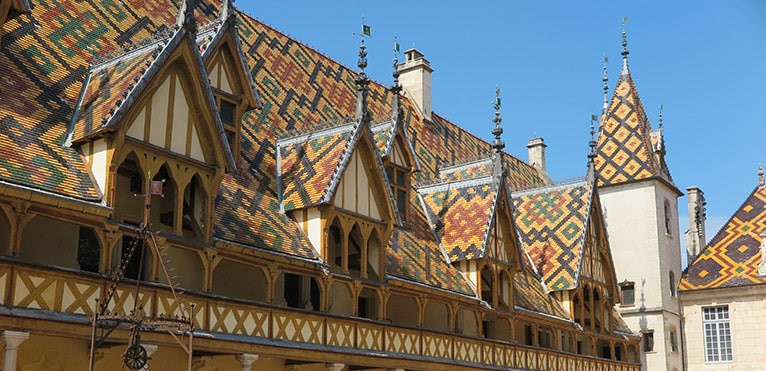
Contents
Côte de Beaune is a wine appellation located in the eponymous commune of Beaune in the Côte d’Or. At the heart of the Burgundy region, which includes 83 other appellations, it is part of the Côte de Beaune vineyards. The red and white wines produced with care in the Côte de Beaune vineyards are recognized by the Appellation D’origine Contrôlée label. It should be noted that this appellation, produced solely in the commune of Beaune, should not be confused with the “Côte de Beaune-Villages” appellation, which covers a number of localities around the town of Beaune.
Beaune and its history
The origins of the vineyard date back to the Middle Ages. However, there are few traces of personal, non-commercial development of the vineyard. In the 19th century, the vines were ravaged by a succession of diseases such as moth and powdery mildew. Downy mildew and phylloxera, which particularly affect the vineyards of the Burgundy region, do not spare the town of Beaune and its vineyards. Production was gradually rebuilt using new viticultural methods. Downy mildew made an impressive reappearance before the Second World War, but such contaminations have not been recorded since. The vineyard was awarded the Appellation Origine Contrôlée label in 1937 under the Appellation Village du vignoble de la Côte de Beaune. The 20th century saw a gradual modernization of viticulture and winemaking methods.
Côte-de-Beaune is a typical Burgundy vineyard
Côte de Beaune is produced above the Premiers Crus in the heights of the Beaune mountain range, at an altitude varying between 300 and 370 meters. Red wine vineyards cover just over 15 hectares, while white wines are produced on just under 14 hectares. The appellation’s vines face the rising sun and draw their resources from the region’s characteristic brown limestone soil. It is also an experimental terroir for vine science, thanks to the Lieu-dit Mont Battois, used to study Burgundian grape varieties.
Côte-de-Beaune produces round, pleasant wines
Côte de Beaune vineyards are planted with Pinot noir for reds and Chardonnay for whites. Côte de Beaune red wines have a ruby color, sometimes revealing soft purple highlights. On the nose, the woody scents reveal red fruit, animal notes and the scent of undergrowth. On the palate, the appellation’s reds offer pleasant acidity that remains round on the palate.
White wines shine in the glass with their sparkling golden color. The first scents suggest citrus and fresh herb aromas, which are confirmed by the first tastings. These aromas then reveal both fruity and mineral notes that blend perfectly with the wine’s roundness and acidity.
Thanks to the acidity characteristic of the Côte de Beaune appellation, this wine has good ageing potential. In fact, tasting is recommended between 2 and 5 years after harvesting.
A Côte-de-Beaune with refined dishes
With their characteristic Pinot Noir aromas and powerful mouthfeel, Côte de Beaune reds are the perfect accompaniment to meat dishes. They can also be served at the end of a meal for their strength, which marvelously complements and underscores cheeses with particularly strong aromas. Seasoned cooks will happily serve them with their pork or beef roasts. They also go well with delicious braised veal.
White wines are characterized by roundness on the palate, followed by powerful, lively aromas that will delight food lovers. Pair them with refined poultry in white sauce, or delicate seafood risottos. More simply, they will sublimate more common dishes such as fish, pasta or goat’s cheese.
White wines from the Côte de Beaune appellation are usually served at a temperature of 11°C. Their red counterparts are best enjoyed at a slightly warmer temperature, around 16°C.
Côte-de-Beaune, an appellation of exceptional vintages
Each year, the exceptionality of vintages varies according to climatic conditions. The “millennium vintage” for red wines in the Côte de Beaune appellation was 1971. The most recent vintages of the century are 1961 and 1978. In recent decades, 2009 and 2005 have been described as excellent and exceptional vintages respectively.
The years 1929, 1937, 1952, 1953, 1966 and 1978 are considered exceptional vintages for Côte de Beaune white wines. The years 1928 and 1949 are referred to as vintages of the century. The most prestigious, called millennium vintages, date from 1947 and 1969. More recently, the 2002 vintage stands out for its remarkable quality.
Côte de Beaune and its estates
Domaine Gilles Jayer
Located in Magny-les-Villers, Domaine Jayer-Gilles has been known as Hoffmann-Jayer since 2017, when industrial heir André Hoffmann acquired the estate. The family estate, established in the 1950s, was born of the meeting and union of two local families. The vineyard’s home village marks the boundary between the Hautes Côtes de Beaune and Hautes Côtes de Nuits appellations. The 11 hectares of vines are planted mainly with Pinot Noir grapes, producing recognized red wines classified as 1er Cru and Grand Cru. The domaine remains diversified, offering white and red Bourgogne Hautes Côtes de Beaune and Bourgogne Hautes Côtes de Nuits.
Paris L’hospitalier
With 15 hectares of vines, Domaine Paris L’Hospitalier is located in the heart of the Burgundy vineyards. We owe him powerful red wines with ripe fruit and floral notes, as well as expressive, fresh whites with subtle toasty notes.